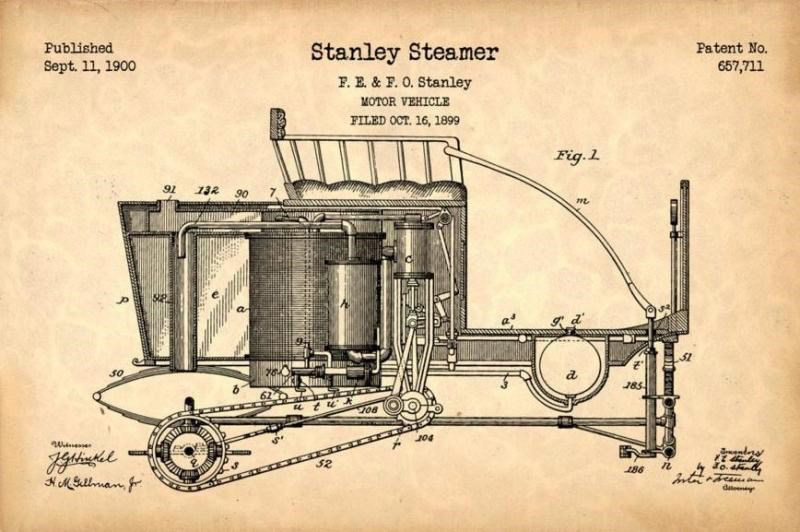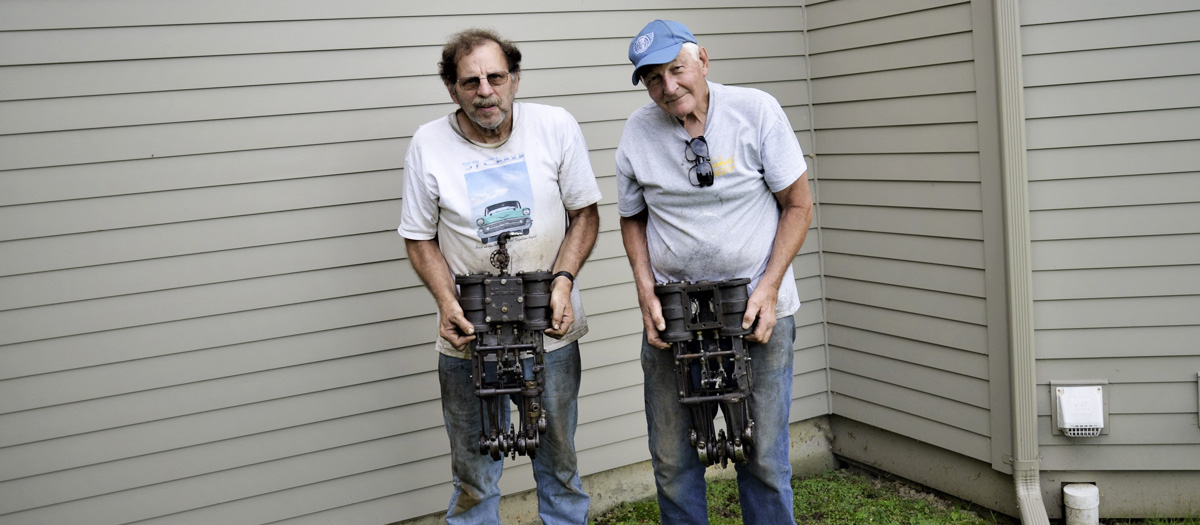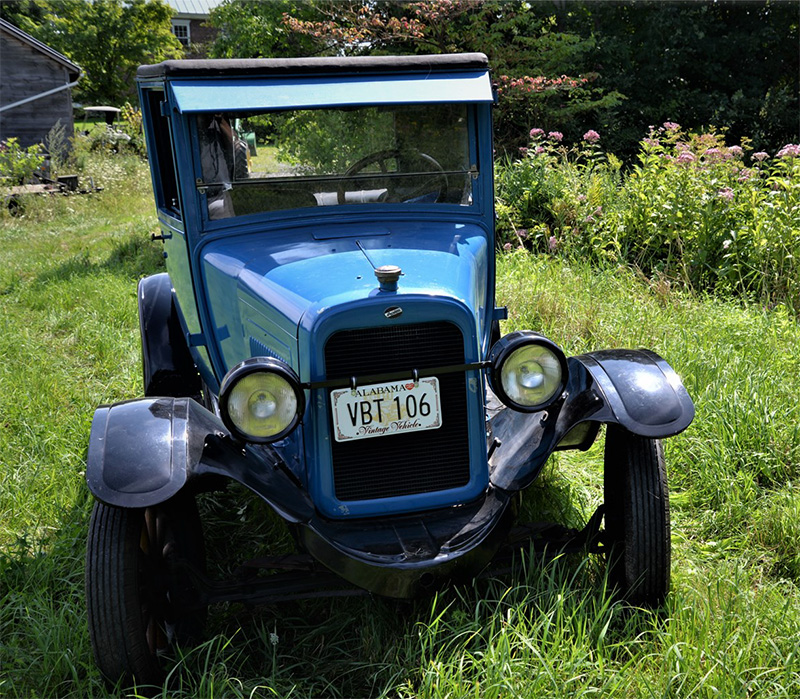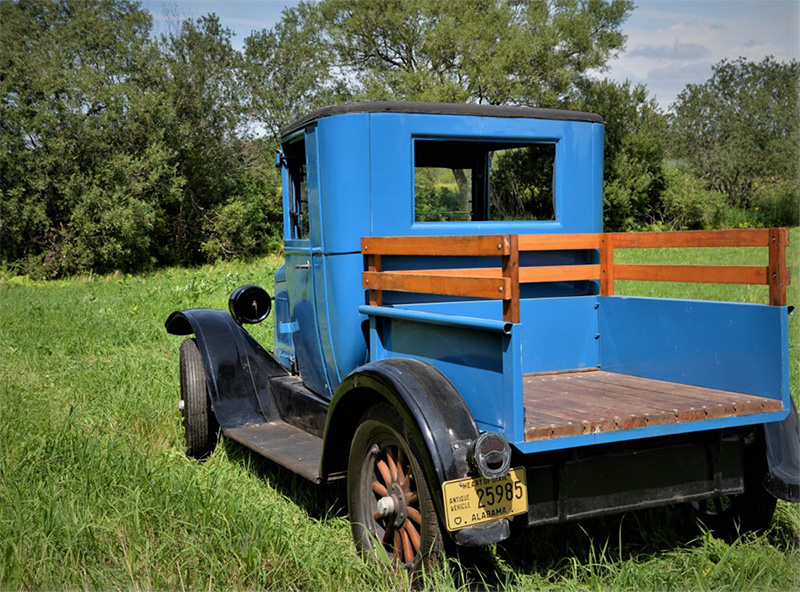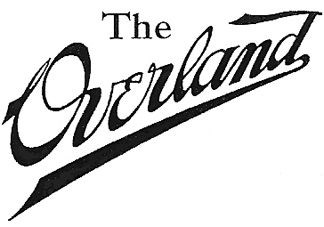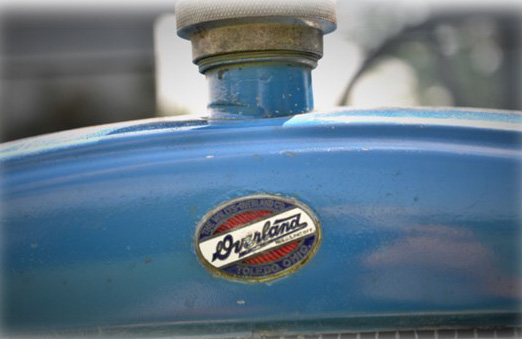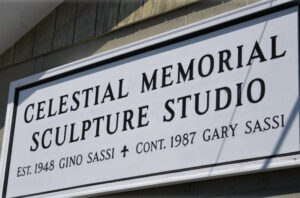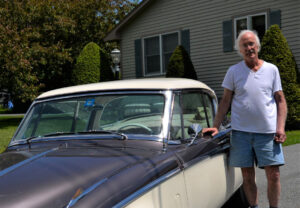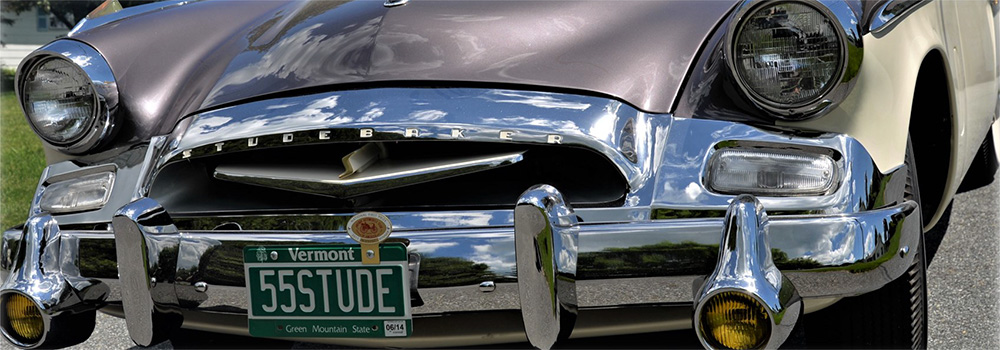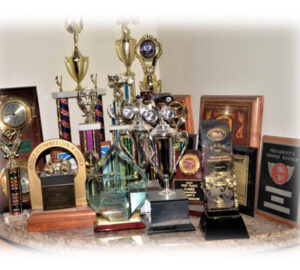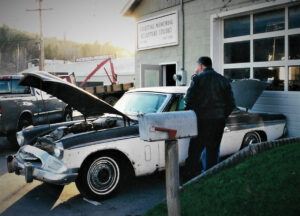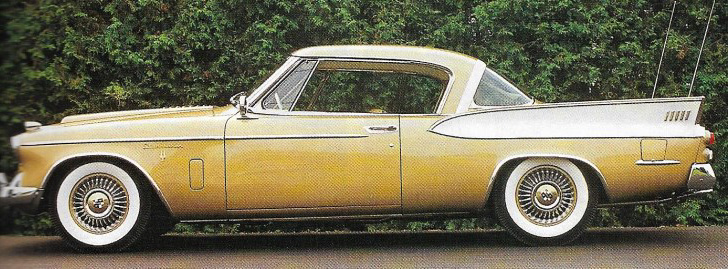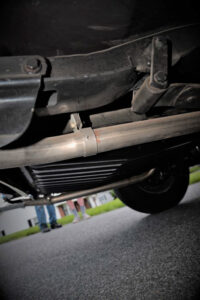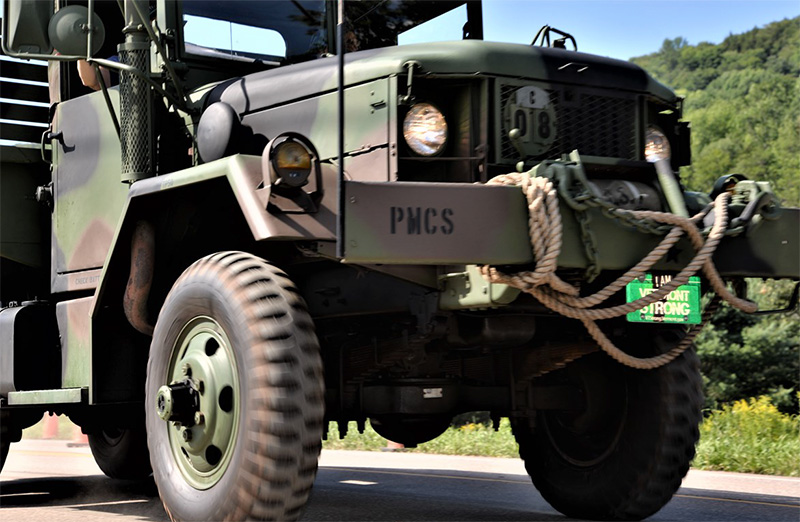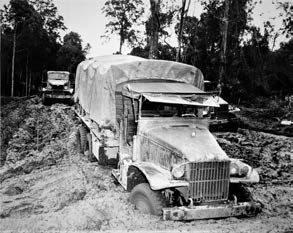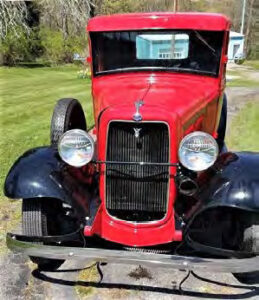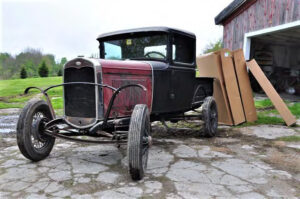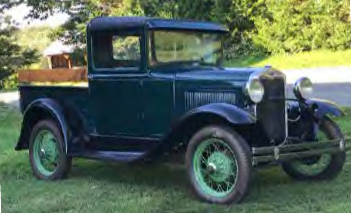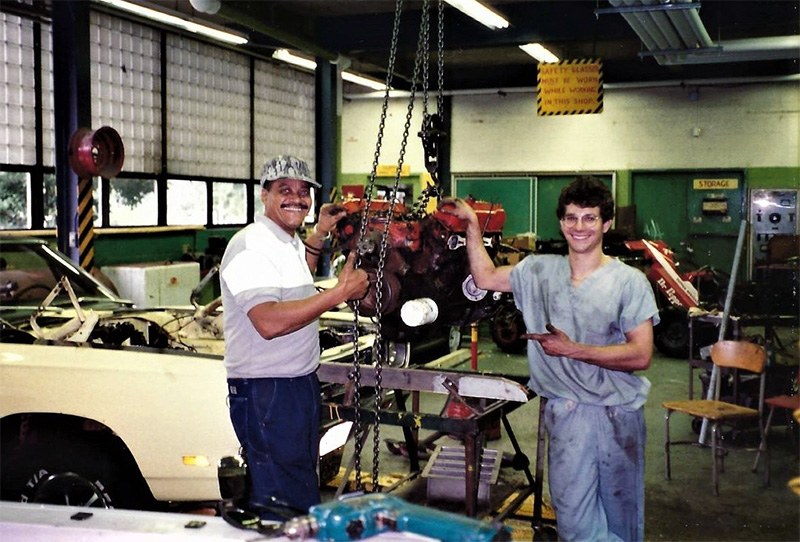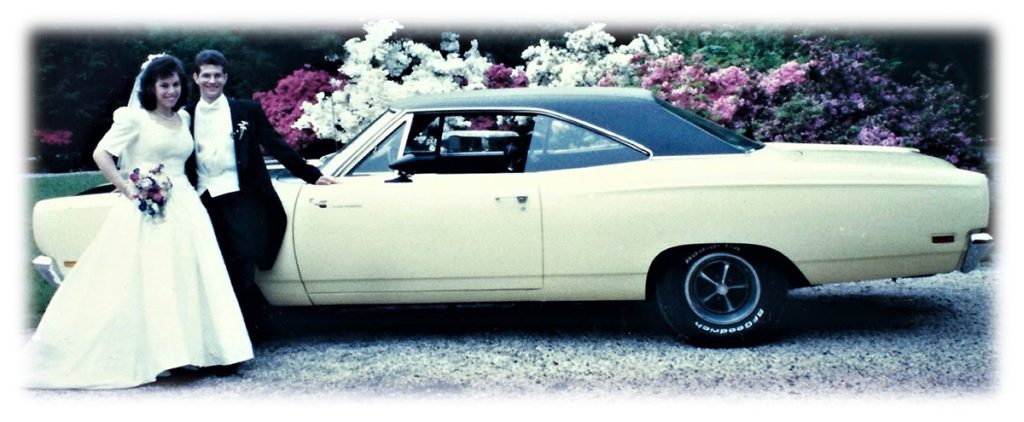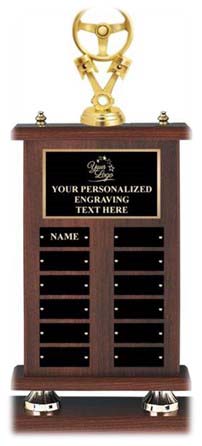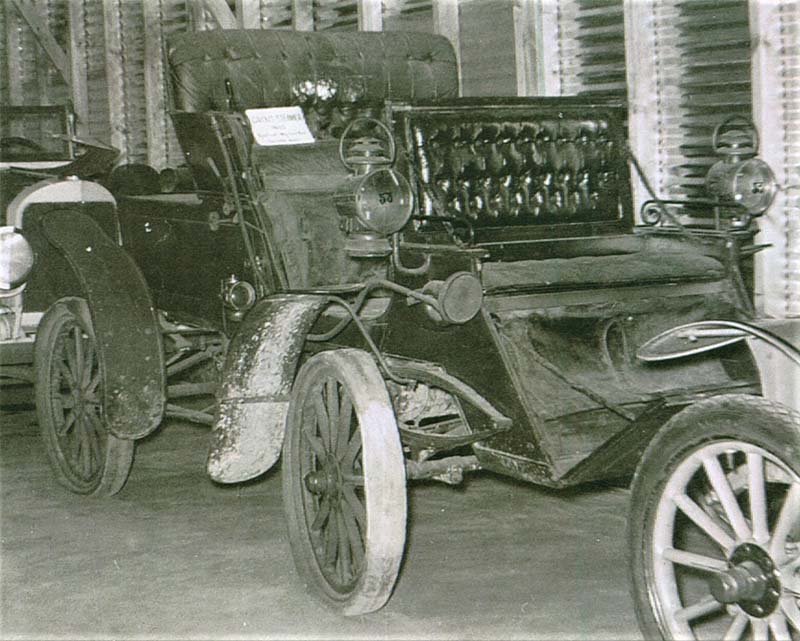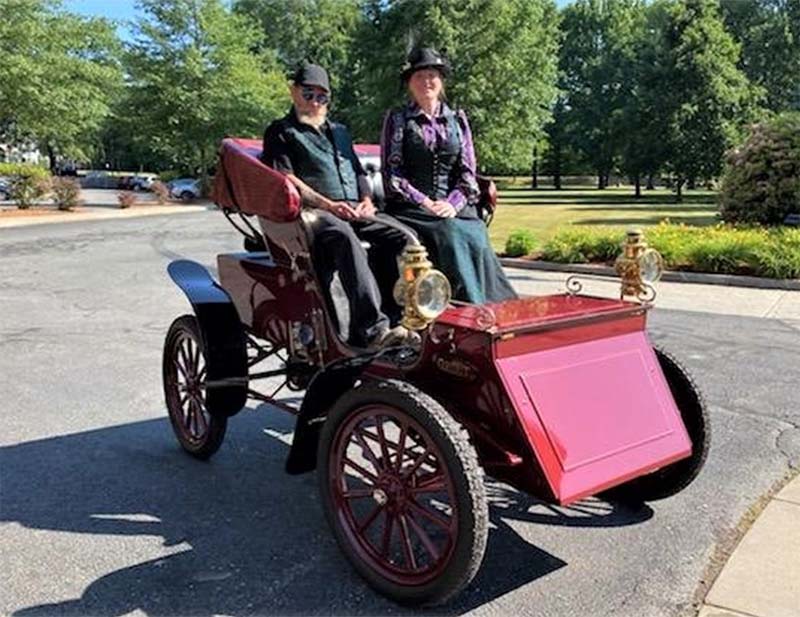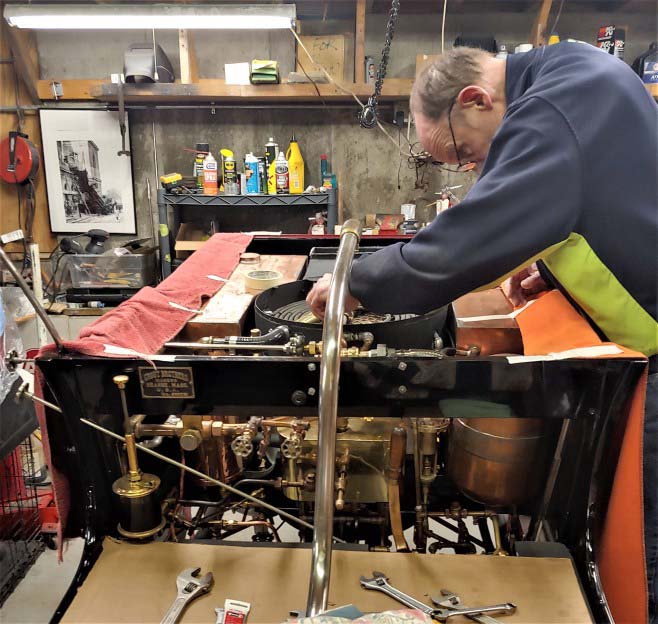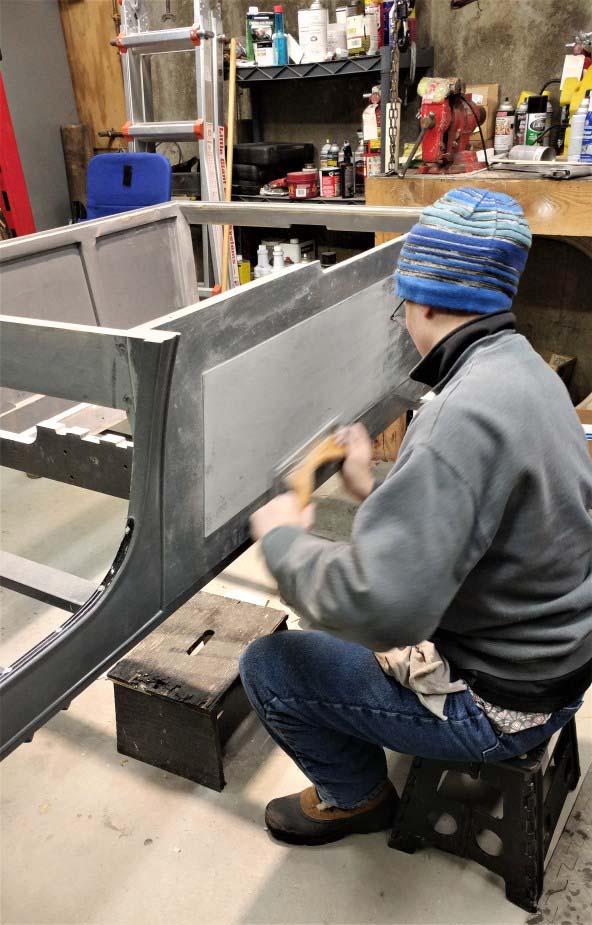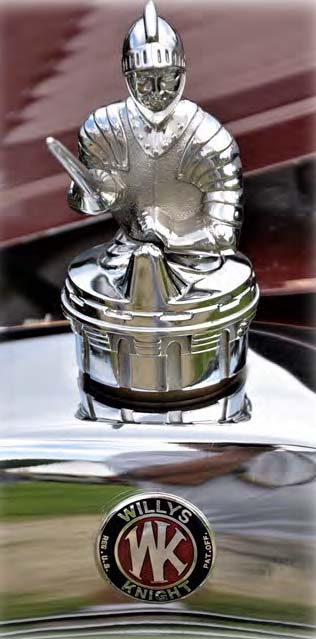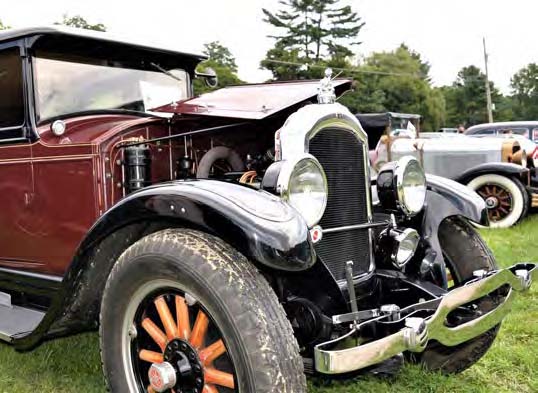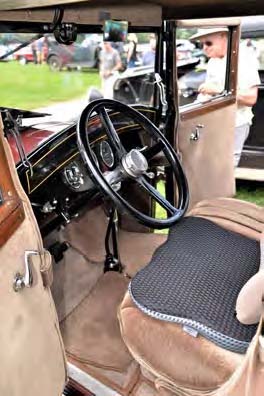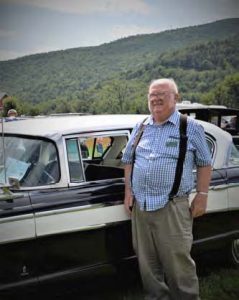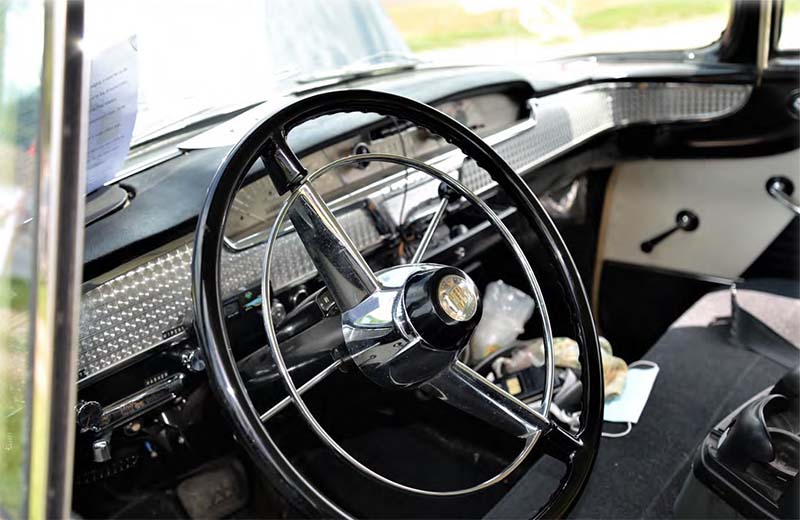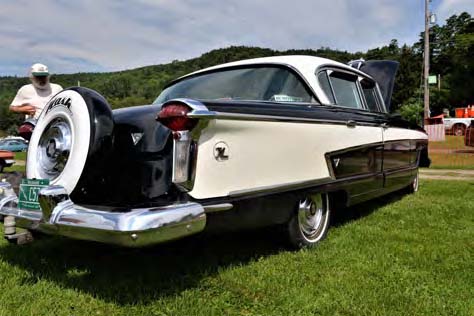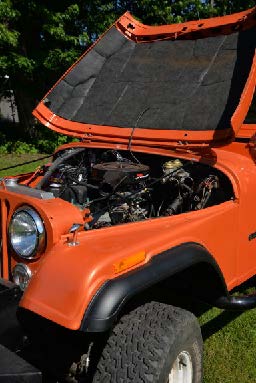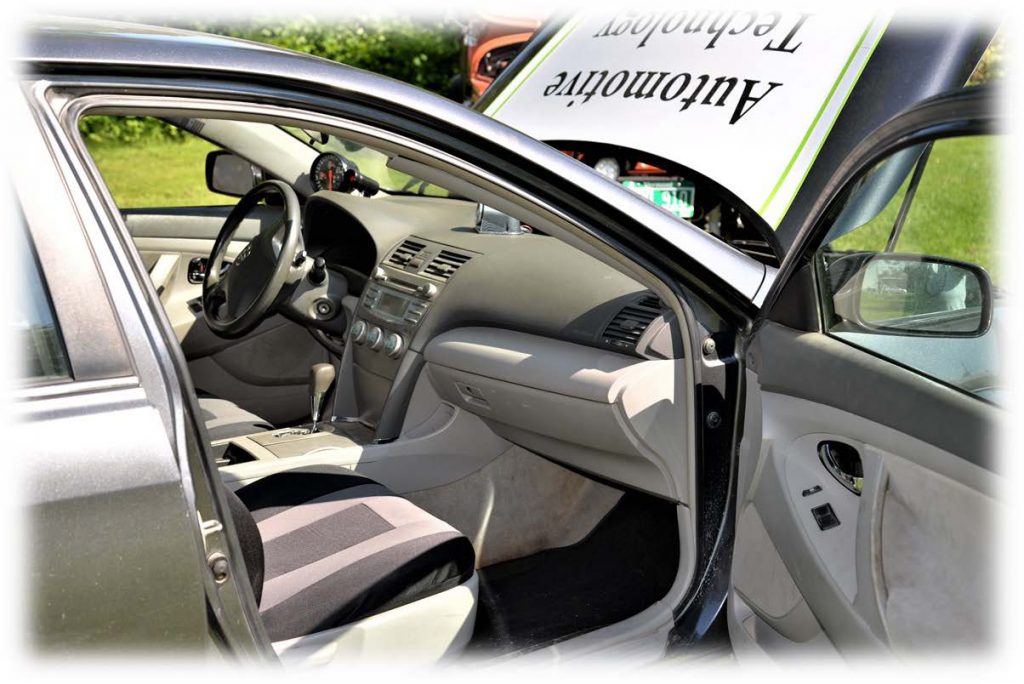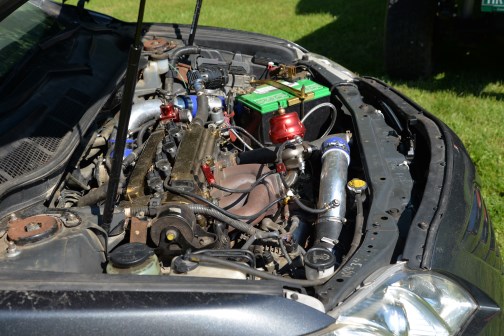And then there were two…….
Bill Erskine, above left, can’t stand having only one of anything. So, he spent hours wearing down Wendell Noble, pictured above right, before finally buying his 1901 Locomobile steam engine.
Bill Erskine found his first Loco steam engine at the AACA gathering in Hershey, PA, a few years ago. He had to make a few parts, that were missing, but soon had it running smoothly on compressed air. The engine was built in 1901 to run on 200 PSI from steam produced by the boiler pictured below.
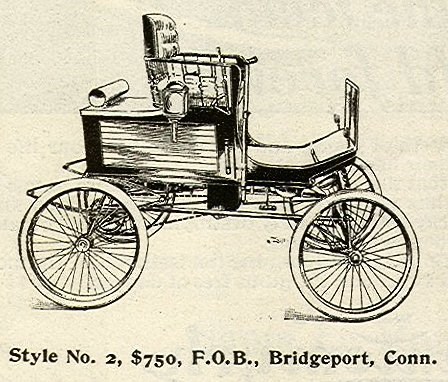
Bill and a friend in New Hampshire have a long-away dream of building the 1901 Locomobile around this engine. Of course now, two will need to be built. Wendell Noble came across the 2nd engine earlier this year and for some reason Bill did not know about it until our August show in Waterbury. Can you imagine the “back and forth” these gents must have gone through before Bill carted his 2nd Loco engine home?
Everyone has heard about the Stanley Steam Car, but did you know there were two Stanley brothers who built that car? In fact, they were identical twins, Freelan and Francis.
Freelan and his wife, Flora, are credited with being the first individuals to drive an automobile to the top of Mt. Washington. That was August 31, 1899. They were driving the steam powered Locomobile they had built using an engine just like Bill Erskine’s.
The brothers had a successful business manufacturing photographic plates before they started tinkering with steam cars. They completed their first in 1897 and a year later sold their auto business to John Walker for $250,000. Mr. Walker, then asked Mr. Amzi Barber if he would like to join him as 50-50 partners for only $250,000. Barber accepted, but the partnership ended within months when he found he had been a bit hoodwinked.
The Locomobile brand continued until 1929. Their little Runabout weighed about 850 pounds and later in 1918, their prized gas-powered Locomobile Sportif weighed in at over 6000 pounds. Quite a weight gain!
The Stanley brothers soon left the Loco company to produce the car we all know, the Stanley Steamer.
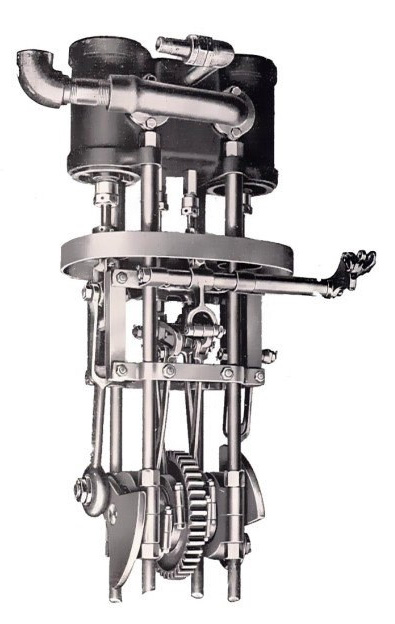
The engine pictured right is one of their first for the Stanley Steamer, very similar to the Loco, wouldn’t you say? The Stanley autos were built from 1905 until 1925, all using steam power.
Wouldn’t it be interesting to see all the steam engines, side by side, that steam car manufacturers used in 1900? There were 61 steam car brands in the United States at the time. You can see the September 11th, 1900 drawing below was called “Stanley Steamer”. All the while the brothers were working as Locomobile plant managers for Mr. John Walker, that stellar gent who fooled Mr. Barber.
It seems like the auto business was a little like the wild west in 1901.
Francis and his twin brother Freelan Stanley were born June 1, 1849 in Kingfield, Maine. They also had a sister named Chansonetta, a gifted photographer. Francis died from injuries sustained in an automobile accident in 1918. Freelan died on October 2, 1940.
If you are ever in Kingsfield ME, you can find the Stanley museum at 40 School Street.
